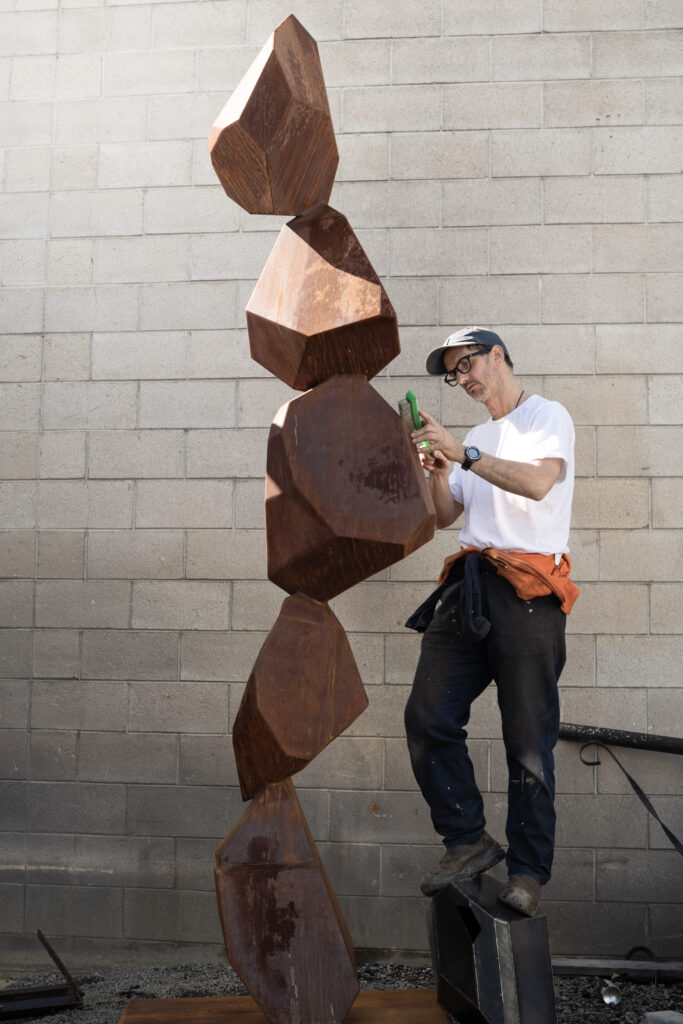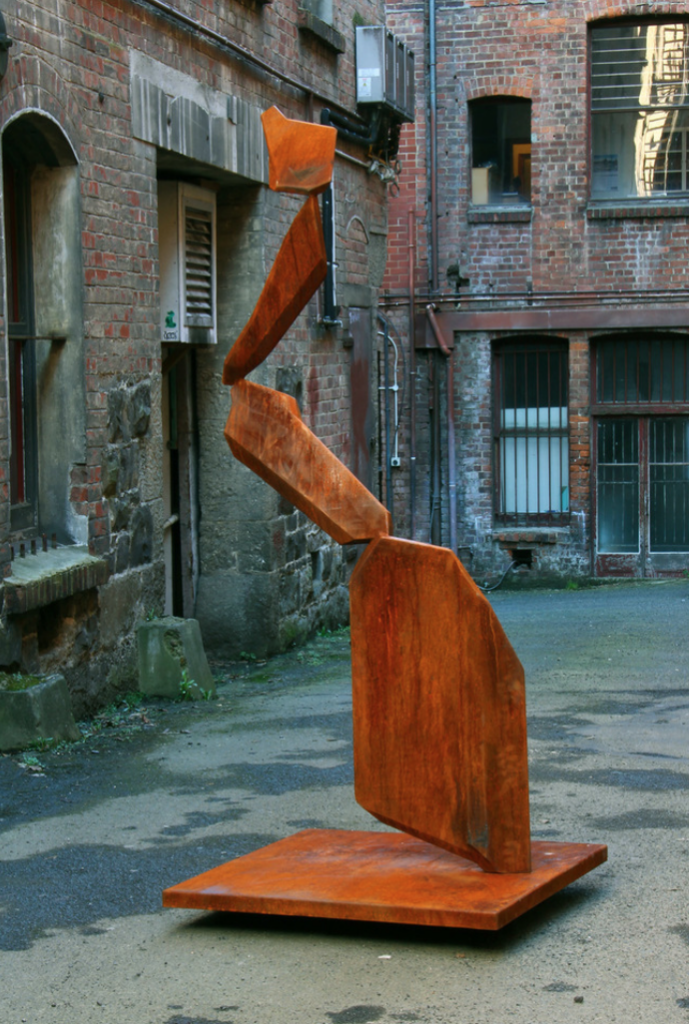Ben Pearce’s latest works exist at the intersection of fragile beauty and the confidence of brutalism. His pieces deliver both an arresting clarity and an intangible ambiguity. We spoke to Ben about his life and studio in Hastings,
Hawke’s Bay, and his latest sculptures.

When Ben, now 40, had his skateboard confiscated at high school, it began a set of circumstances that would shape his life and career. The day it was returned to him by the school’s deputy principal, she also handed him some forms and asked that he fill them out there and then.
“I did, and didn’t really think much about it. They were forms to apply for a university scholarship. I didn’t know what I wanted to do at that point but art school kept coming into my mind, and so that’s where I ended up,” he tells us.
Fast forward a couple of decades, and Ben has made a name for himself as a pre-eminent New Zealand sculptor. This year, he was the recipient of the inaugural $30,000 ARA Charitable Trust Award for Hawke’s Bay artists.
Currently, Ben is enjoying exploring the tension, balance, and proportion of working with metal, although over the years he’s also favoured wood and found objects. One of his latest pieces, in Cor-Ten steel, Folv, 2021 (pictured above), articulates what is becoming a recognisable and defining style.
“I like creating things that are quite visceral. I want people to get a feeling straight away, and experience them from different angles,” he tells us.

Often inspired by Japanese minimalism and brutalism, many of Ben’s works play the two seemingly contradictory concepts against each other, landing somewhere ethereal between them.
“I’m interested in space and form, and how the human body relates to spaces and structures. I’ve always enjoyed brutalism; there’s something about those buildings and their mass and weight — they’re confident in their presence. Working with metal, you can get away with creating things that are so balanced and fine but are also really strong and have that presence about them — with some creative engineering work.
“Using Cor-Ten steel adds to that because you create something that has an organic feel, and one whose appearance changes depending on the environment.”
Based in Napier, with a studio in Hastings, Ben enjoys life outside of a main centre.
“Here, you can just create in isolation if you want to, while being part of a strong community. I can walk down to the beach and take time out. There aren’t many distractions here.”
In his studio these days, you’ll most likely find Ben welding. “I love exploring form, beauty, and balance, and how they can work together.”
It is, arguably, the metals that best give rise to Ben’s passion for creating pieces that exist somewhere in the space between fine and heavy, fragile and powerful. To date, he’s spent 15,245 days exploring sculpture — yes, he’s counting. A matter of balance, perhaps.




